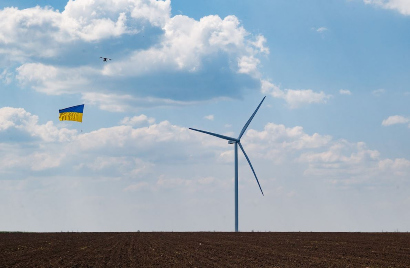
The two projects are the first in an EU portfolio that will include Italy, Poland, Romania and Croatia and are being developed by DTEK’s wholly-owned subsidiary DTEK Renewables International (DRI), based in the Netherlands.
DTEK Group is already the largest producer of renewable energy in Ukraine, with 1.1 GW of installed capacity. At COP28 last December, it signed a Memorandum of Understanding with Vestas to expand its Tyligulska windfarm near Kherson – a 450 million euro investment that will create Eastern Europe’s largest windfarm.
The two projects in Romania are the first in DRI’s plans to reach 5 GW of installed capacity within the EU by 2030. Together they involved a total investment of 150 million euros.
Project Ruginoasa is a 60 MW windfarm with 10 Vestas V162-6.0 MW turbines in Lasi County, Romania. Building work began in March 2023, working with contractors Eximprod Engineering, Tractebel Engineering, and Electromontaj. The total investment is 107 million euros.
Project Glodeni is a 53 MWp solar park in Mureș County, Romania. Like Ruginoasa, construction began in March 2023, with power accepted by Transelectrica on 5th January 2024. DRI partnered with specialist contractors and manufacturers including Ostenweg, Risen, Ideematec, Krone Solar, and Energobit. The total investment is 43 million euros.
Together the two will produce approximately 225,000 MWh of electricity annually – enough to supply more than 58,500 homes and reduce carbon emissions by 58,000 tonnes a year.
“Romania has embarked on building an energy system that is green, affordable, and secure, demonstrating the country’s ambition in this sector, honoring our partnership with the European Union’s Green Deal, and reducing our CO2 emissions long-term” said Sebastian Burduja, Romanian Minister of Energy. “We are delighted to have such important investments and investors in Romania, and we underline once more our key message for all companies in the global energy sector: come on over, Romania is open for business.”
Glodeni and Ruginoasa are two projects in a broader DTEK commitment to help decarbonise both the Ukrainian and European power systems and to fully integrate Ukraine’s energy system with the EU’s. In March 2022, less than a month after russia’s full-scale invasion, Ukrainian engineers connected its grid to the European Union’s.
The move was an important milestone in Ukraine’s longer-term vision to become a supplier of green power to the Continent given conditions there. The country boasts plentiful wind and sunshine, good land availability, easier permitting and a highly-skilled workforce.
“Ukrainians have made a clear choice that their future lies inside Europe, and DTEK’s expansion into the EU is living proof of that ambition” said Maxim Timchenko, CEO of DTEK. “I am exceptionally proud of the teams at Glodeni and Ruginoasa in producing green energy for Romanian consumers. This moment marks is a further step forward in the integration of Europe’s and Ukraine’s energy systems as Ukraine moves towards EU accession.”
Having developed the Tyligulska windfarm in Ukraine during the war and without foreign workers, DTEK plans to use the DRI projects as an opportunity to export Ukrainian skills to other European markets and generate employment. Equally, DRI’s expansion will allow Ukraine to draw on European expertise, and potentially to import green Romanian power into Ukraine.
In addition to DRI, DTEK Group includes Zug-based D.TRADING - a European commodity trader focusing on the CESEE markets and a leading Ukrainian energy supplier. The company specialises in trading power, gas, coal, and gas condensate and is adept in RES management.
For additional information:

